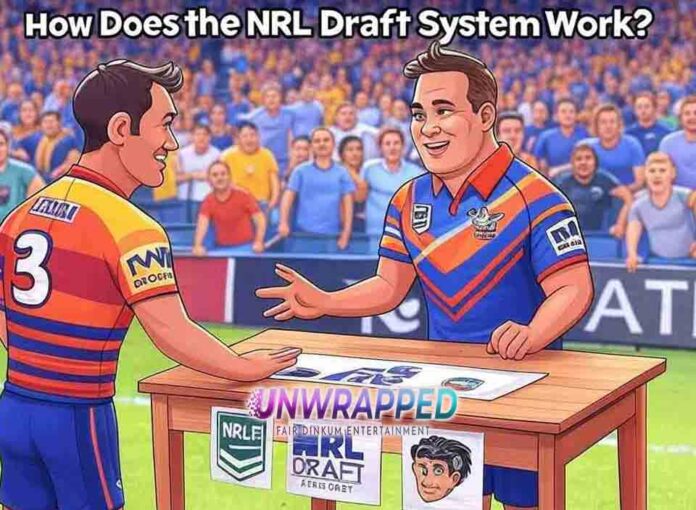The National Rugby League (NRL) has long been a cornerstone of Australian sports culture, captivating fans with its intense competition and dynamic gameplay. A topic that often surfaces in discussions about the league’s structure is the concept of a draft system—a mechanism used in various sports leagues worldwide to distribute new talent among teams. This article delves into the intricacies of the NRL’s approach to player recruitment, the historical context of draft considerations, and the ongoing debates surrounding the potential implementation of such a system.
Understanding the Draft System
In professional sports, a draft is a process where teams select eligible players to join their ranks, typically from a pool of amateur or young athletes. The primary objective of a draft is to promote competitive balance by allowing teams with poorer performance records to have the first choice of new talent. This system aims to prevent wealthier or more successful teams from monopolizing top prospects, thereby ensuring a more level playing field across the league. Leagues like the National Football League (NFL) and the National Basketball Association (NBA) in the United States have long utilized draft systems to manage player distribution.
The NRL’s Historical Stance on Drafts
The NRL does not currently employ a draft system for player recruitment. Historically, the league attempted to introduce a draft in 1991. However, this initiative faced significant legal challenges. Notably, player Terry Hill contested the draft’s legality, arguing that it imposed an unreasonable restraint of trade by restricting his freedom to choose his employer. The court ruled in Hill’s favor, leading to the abandonment of the draft system in the NRL.
Current Player Recruitment and Development in the NRL
Without a draft, the NRL relies on alternative methods for player recruitment and development. Clubs invest heavily in junior development programs and academies, scouting young talent from a young age and nurturing their progression through the ranks. This approach allows clubs to build strong pipelines of homegrown players, fostering loyalty and a deep connection between the player and the club.
Additionally, the NRL employs a salary cap system designed to maintain competitive balance by limiting the total player payments each club can make. This mechanism prevents wealthier clubs from accumulating all the top talent, thereby promoting parity across the league.
Debates and Discussions on Implementing a Draft
The concept of introducing a draft in the NRL has been a topic of ongoing debate. Proponents argue that a draft could further enhance competitive balance by ensuring that struggling teams have access to the best emerging talent. This could make the league more unpredictable and exciting, potentially increasing fan engagement.
In recent years, there have been renewed discussions about implementing a rookie draft to distribute young talent more evenly across clubs. A Pathways Steering Committee, including figures like Roosters coach Trent Robinson and Storm general manager Frank Ponissi, has been reviewing junior development structures and considering the introduction of a rookie draft as part of broader reforms.
However, opponents raise concerns about the potential legal challenges, citing the precedent set by the Terry Hill case. There are also apprehensions about the impact on player autonomy, as a draft system could limit players’ freedom to choose their preferred club, potentially forcing them to relocate to undesirable locations.
Challenges and Considerations
Implementing a draft system in the NRL would require careful navigation of legal, logistical, and cultural challenges. The league would need to address potential legal obstacles related to restraint of trade, ensuring that any draft system complies with employment laws and respects players’ rights.
Logistically, establishing a draft would necessitate the creation of a centralized system to evaluate and rank emerging talent, as well as clear rules governing the draft process. Culturally, the NRL would need to consider the impact on clubs’ traditional junior development programs and the potential resistance from stakeholders accustomed to the current system.
Conclusion
The NRL’s approach to player recruitment and development has been shaped by historical legal challenges and a commitment to maintaining competitive balance through mechanisms like the salary cap. While the idea of implementing a draft system continues to be a topic of discussion, any move towards such a system would require careful consideration of legal, logistical, and cultural factors to ensure it aligns with the league’s objectives and values.
External High Authority Links
For more detailed information on the NRL’s player recruitment policies and the history of draft discussions, you can refer to the following resources:
Call to Action
Understanding the NRL’s player recruitment strategies and the ongoing debates about draft implementation is crucial for fans, players, and stakeholders. Stay informed by reviewing official guidelines and participating in discussions about the league’s policies. Your engagement helps promote transparency and fairness in rugby league.
See Also: What Are The NRL’s Rules on Player Transfers and Contracts?










